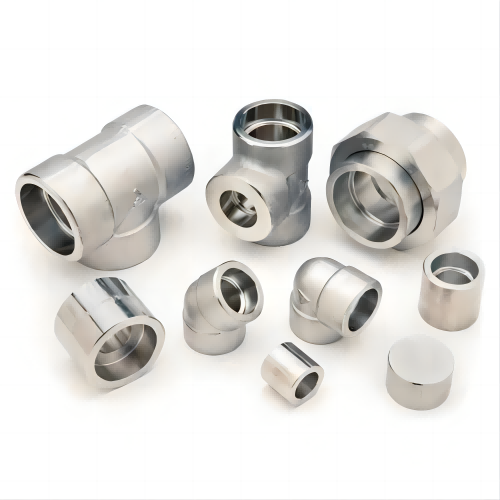
Socket welding pipe fittings is the process of inserting steel pipes into pipe fitting socket joints and then using tungsten argon arc welding to perform an argon arc welding circle along the contact between the end of the pipe fitting socket connection beam and the surface of the stainless steel pipe. Welded pipe is used to make welded pipe fittings. The forming process of welded pipes is essentially the same as that of seamless pipes for pipe fittings manufacturers.
Socket weld fittings differ in terms of the pipe diameters and orientations they allow, allowing wide pipes to connect to narrower ones and a pipe network to change direction or include branches. Different coupling thread arrangements are also available in socket weld fittings, as shown below:
This socket connects two pipes by using threads on both ends to join the pipes.
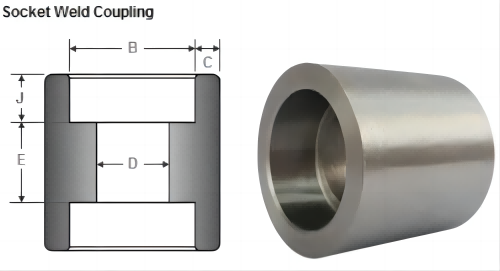
Half couplings are similar to full couplings except that only one end has threads. The non-threaded end of a half coupling is typically welded or otherwise fastened to piping.
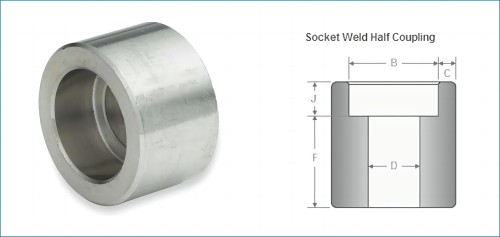
These fittings are used to connect two pipes of different diameters by using sockets of varying widths at either end.

This reducing fitting also allows the connection of pipes of varying diameters.
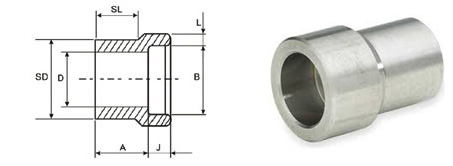
These three-part fittings, which are made up of two internal threads on either side of an interconnected centrepiece, use rotation to bring the pipe ends closer together. As a result, the socket weld union must be tightened before welding the ends to prevent seat warping.
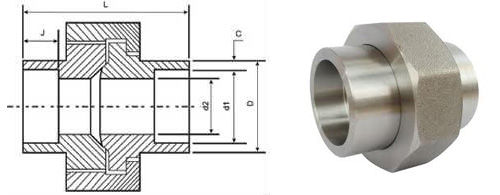
These fittings, which are available at 90-degree and 45-degree angles, allow pipe runs to change direction. SW elbows can be designed with either a short or long radius.
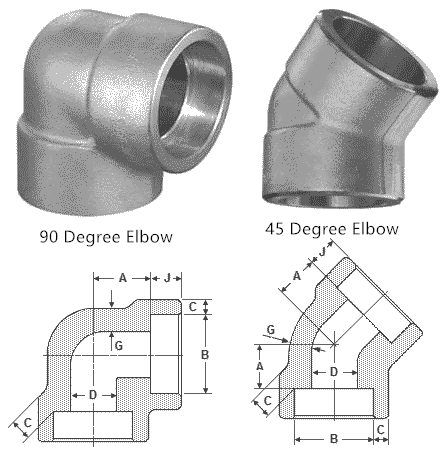
A socket weld tee fitting enables the insertion of a T-junction into a pipe network, resulting in a 90-degree branch off from a straight pipeline. To create the same T-junction with a smaller diameter pipe as the branch, a socket weld reducing tee can be used.
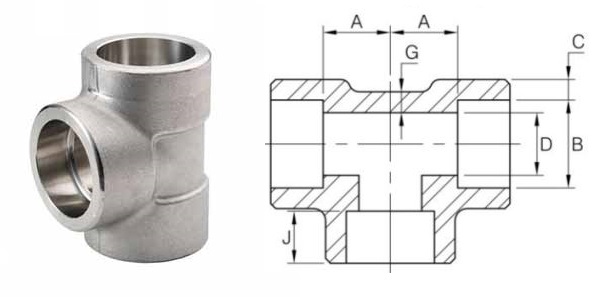
The sockolet, like the threadolet and weldolet, can be used to connect two pipes of different diameters. The sockolet has a socket in the olet (hence the name), making welding easier. The sockolet can create a 90-degree direction change and withstand higher pressures.

This cross-formation fitting allows two branches travelling in the same direction to change directions by 90 degrees.
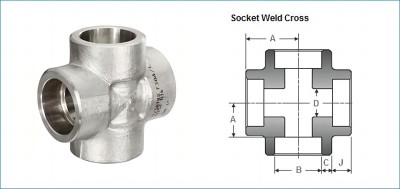
A socket weld cap is used to seal the end of a pipe.
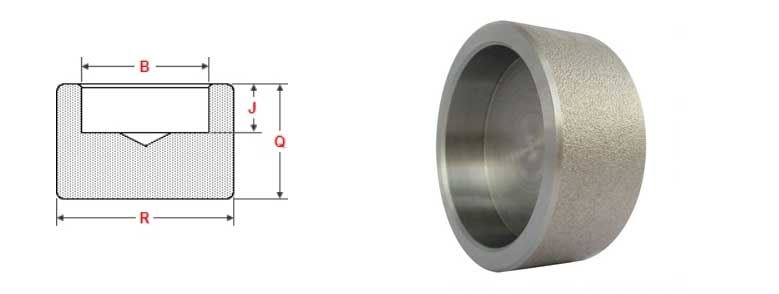
SW flanges have a recessed shoulder on the inner diameter that allows the pipe to be properly fitted. These fittings are commonly used for small diameter pipes and can withstand higher pressures while still providing excellent flow characteristics. There are several SW flange designs available, including flat and raised face versions, each with its own pressure rating.

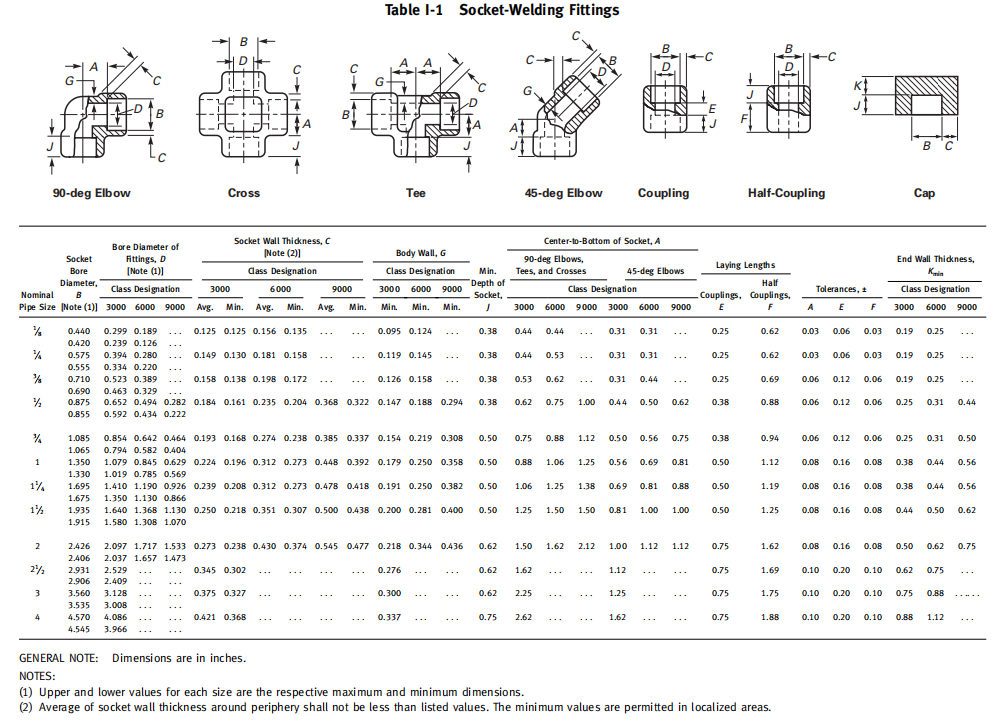
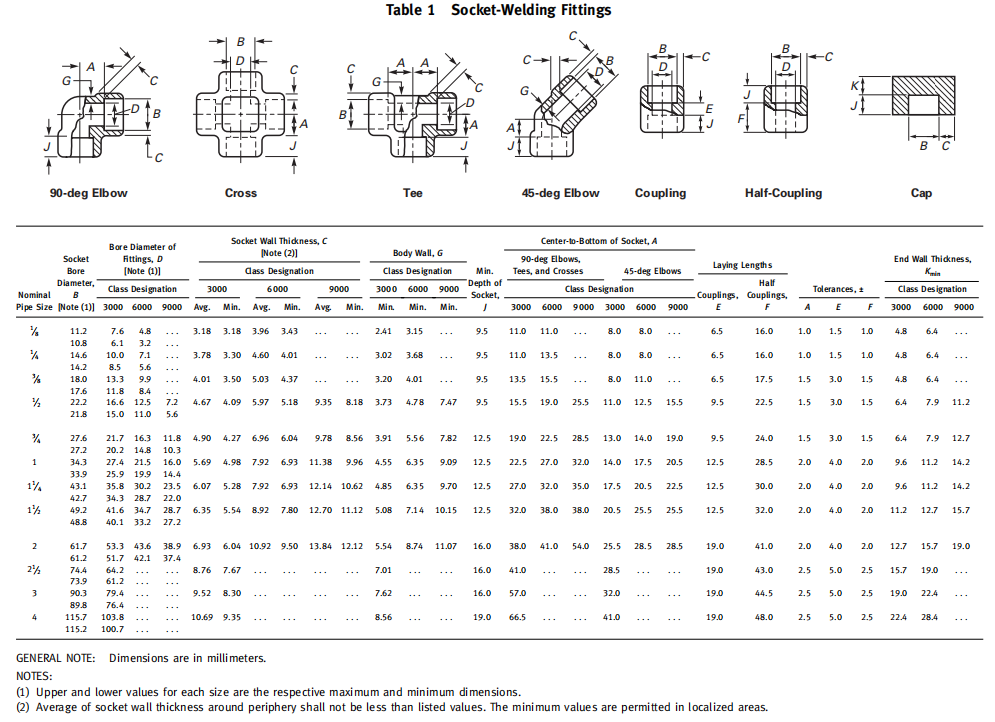
Socket weld fittings have several inherent advantages when it comes to joining pipes, including:
Because the socket easily allows proper alignment, tack welds are not required to align the pipes for welding.
Socket weld fittings are less likely to leak than threaded fittings.
Because of the socket design, weld metal does not flow into the pipe bore.
Because of the more relaxed dimensional requirements, socket weld fittings are less expensive to install than butt weld fittings.
Socket weld fittings are primarily used in departments and fields that require high pressure and precise dimensions, such as petrochemical, medical and health, electric power, aerospace, military, fire protection, metallurgy, shipbuilding, gas, nuclear power, and environmental protection.
Socket weld fittings have areas where substances can build up that are difficult to clean because the sockets do not allow complete penetration and must include an expansion gap between the socket shoulder and the pipe.
Socket weld fittings are therefore unsuitable for use in the food industry for hygiene reasons, as well as for use with radioactive or corrosive substances that could build up and cause maintenance or operating issues.
Some applications are not suitable for socket weld use, as stated above in the 'disadvantages' section, but the high pressure ratings associated with socket weld fittings make them ideal for a wide range of other industrial applications.
Due to the lower risk of leakage compared to other joining techniques, SW pipe fittings can be used in pipelines to transport flammable, toxic, or hazardous chemicals safely.
SW pipe fittings create a leak-free permanent join while also allowing for excellent flow characteristics. These fittings have been shown to meet performance requirements, including tolerances, pressure and temperature ratings, dimensions, materials, and markings, when manufactured to ASME and ASTM standard specifications.
Socket weld pipe fittings are classified by material, such as alloy or carbon steel pipes and stainless steel pipes. Couplings, reducers, reducing and regular socket weld tees, elbows, and flanges are all available in a variety of material types and can be used for a variety of applications.
Visual inspection is commonly used to evaluate socket welds, but other non-destructive testing methods can be used as well.
Magnetic particle inspection can be used to find surface and near-surface defects in pipe welds, while radiographic inspection can find internal voids.

Because there are differences between the two types of weld, socket weld and butt weld fittings are governed by different applicable standards (socket weld fittings are ASME B16.11 and butt weld fittings are ASME B16.9).
Socket welds require the pipe to be inserted into a recess at the joint with no need to bevel the pipe ends or prepare the materials other than to ensure they are clean.
Butt welds require that the fittings be the same thickness as the pipes in order to be welded. Butt welded joints must also have bevelled ends.
In addition to these practical differences, there are performance differences, with butt weld fittings being stronger. As a result, socket weld fittings are typically reserved for pipes with small diameters. Because of this strength difference, butt welds are preferred for high temperature and pressure applications, or where the weld joint strength does not need to be greater than the base metal.
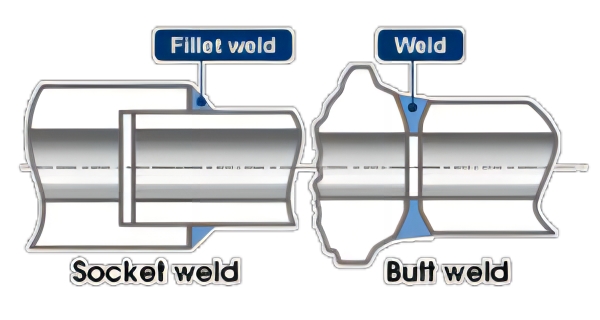
Although the shapes of the two welds are similar, a socket weld is generally considered to be distinct from a fillet weld.
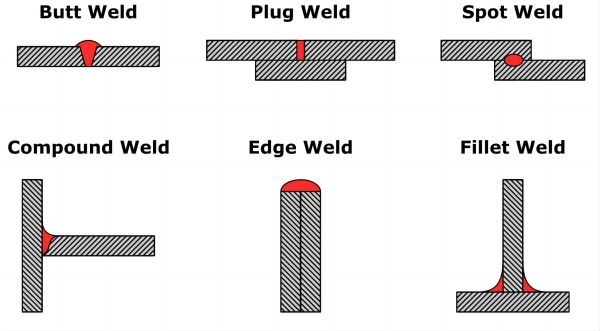
To fit a socket weld, insert a pipe into the fitting's recess, leaving at least 1/16" of space to allow for thermal expansion of the pipe under welding pressure. Once the pipe is in place, it can be welded with a series of fillet welds. If the pipe expands against the fitting, the thermal expansion gap will prevent the weld from cracking.
Socket weld flanges are typically found on smaller diameter, high-pressure pipes. To hold it in place, the pipes are inserted into the socket end and fillet welds are applied around the top.
Using radiographic inspection techniques similar to those used in the medical industry, X-rays can be used to examine socket welds.
Although radiographing socket welds is not an ideal method for determining weld quality, it will tell you if there is an appropriate root gap.
Socket weld fittings are best suited to small diameter pipes with NPS ratings of 2 or less. They can be used to connect small bore pipe sections using fillet weld joins to seal the pipes to the fitting.
Socket weld fittings connect lines of small diameter pipe used to transport flammable, toxic, or expensive materials that must not leak. Socket weld fittings can also be used for steam at pressures ranging from 300 to 600 psi. They can form a high-strength union with a high flow characteristic and low leakage.
Socket welding is a method of connecting pipes that uses a variety of fittings to allow for changes in the direction and diameter of pipe networks as well as the creation of branches from existing pipelines.
The pipes are inserted into the socket weld fitting, which has a recess to accept the pipe and allows for easy placement. The pipe can be fixed in place with fillet welds around its outer diameter after being inserted into the recess, leaving a gap at the bottom of the socket to prevent a potential stress failure.
Socket weld fittings, which are mostly used for smaller pipes, provide leak-proof joins that can withstand high pressures and deliver high-flow characteristics. The fittings come in a variety of styles and materials to suit a variety of applications.
Contact: Sino Special Metal Co., Ltd.
Phone: 86-19527792928
E-mail: sales@ssmsteel.com
Whatsapp:86-19527792928
Add: Mudu town Jinfeng South Road, Wuzhong District, Suzhou City, Jiangsu Province
We chat
